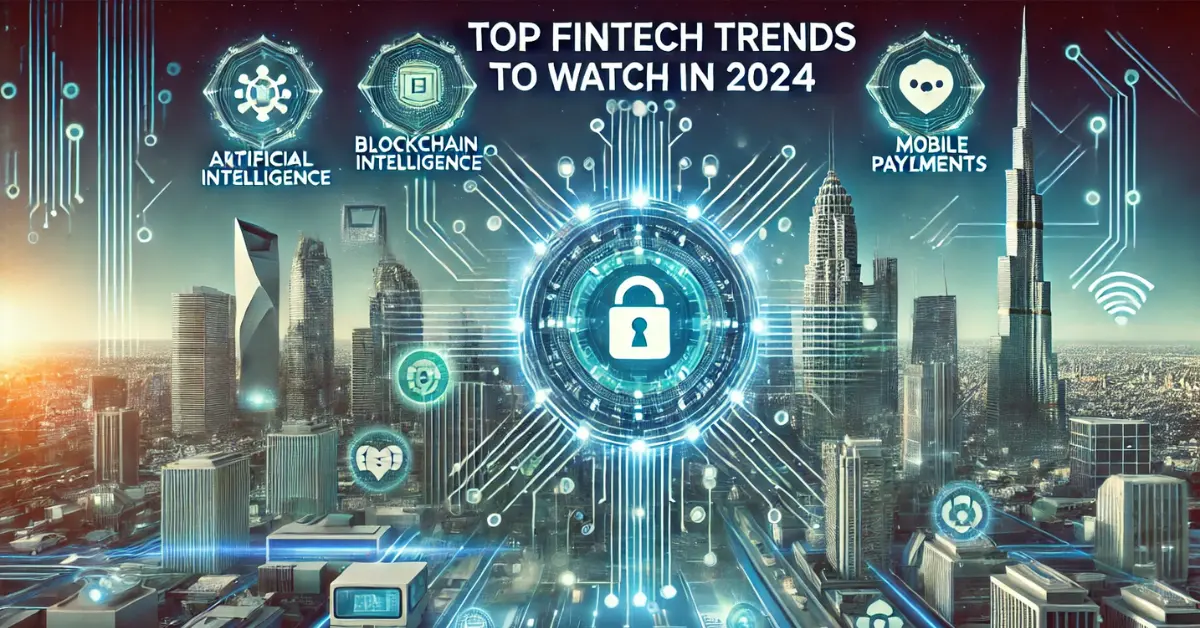As we enter 2024, the fintech landscape is undergoing a profound transformation, rapidly reshaping the delivery and consumption of financial services. Digital banking, blockchain, artificial intelligence (AI), and other technological advancements are not just trends; they are powerful forces driving innovation across the industry. This article delves into the top fintech trends of 2024, providing insights into how these developments are set to redefine the financial sector. Whether you are an investor, a startup, or an industry veteran, understanding these trends will be crucial to staying ahead of the curve and positioning yourself strategically in this dynamic environment.
Digital Banking Evolution Beyond the Basics
While digital banking is not a new trend, its expansion in 2024 is reaching unprecedented levels. Beyond the basic online access to traditional banking services, digital banks are now enhancing customer experiences through hyper-personalization, open banking, and embedded finance.
Hyper-Personalization
With the increasing availability of customer data, digital banks are leveraging AI and machine learning to deliver highly personalized services. From tailored financial advice to customized product offerings, banks are shifting towards a model that anticipates customer needs, providing solutions even before the customer realizes they need them.
Open Banking and Embedded Finance
Open banking, which allows third-party developers to build applications and services around a financial institution, is revolutionizing the digital banking space. Embedded finance is taking this a step further by integrating financial services into non-financial platforms. This trend means consumers can access banking services directly within apps they already use, such as social media or e-commerce platforms, making financial services more accessible and seamless.
Blockchain and Decentralized Finance (DeFi) Moving Toward the Mainstream
Blockchain technology and decentralized finance (DeFi) have been buzzwords in the fintech world for some time, but 2024 is poised to be the year they move into the mainstream. The potential of blockchain’s application goes beyond cryptocurrencies, with its promise of secure, transparent, and efficient transactions being recognized across various sectors. This is a promising sign for the future of financial transactions.
Cross-border Payments and Remittances
Blockchain’s ability to facilitate instant, secure, and low-cost transactions is being increasingly adopted for cross-border payments and remittances. Traditional methods are often slow and expensive, but blockchain provides a more efficient alternative, reducing transaction costs and time significantly.
Tokenization and Digital Assets
Tokenization, or converting assets into digital tokens on a blockchain, is gaining traction. From real estate to art, tokenization allows for fractional ownership, increasing liquidity and opening up new investment opportunities. Additionally, Central Bank Digital Currencies (CBDCs) are gaining attention, with several central banks exploring their development and potential integration into the mainstream financial system.
Artificial Intelligence and Machine Learning: Enhancing Decision-Making
Artificial Intelligence (AI) and Machine Learning (ML) continue to drive significant change in fintech, particularly in areas such as fraud detection, credit scoring, and customer service. These technologies are increasingly being utilized to enhance decision-making processes, streamline operations, and provide personalized experiences.
Fraud Detection and Risk Management
AI-powered algorithms have reached new levels of sophistication, enabling financial institutions to detect fraudulent activities in real-time. These systems analyze vast amounts of data, identifying patterns and anomalies that could indicate fraudulent behavior, significantly reducing the risk of financial crime.
Customer Service and Chatbots
AI-driven chatbots are transforming customer service in the fintech sector. Capable of handling a wide range of inquiries, these chatbots provide instant, 24/7 support, improving customer satisfaction while reducing operational costs. In 2024, we expect to see even more advanced AI models capable of understanding complex queries and providing highly personalized responses.
Buy Now, Pay Later (BNPL) and Alternative Lending Models: Redefining Credit
The Buy Now, Pay Later (BNPL) model has surged in popularity, particularly among younger consumers seeking flexibility in their purchasing decisions. This trend is expected to continue in 2024, with BNPL services expanding beyond retail into sectors such as healthcare, travel, and education.
Alternative Lending Models
Alongside BNPL, other alternative lending models, such as peer-to-peer (P2P) lending and crowdfunding, are gaining traction. These models provide greater access to credit, particularly for underserved segments, and offer investors new opportunities to diversify their portfolios.
Regulatory Scrutiny and Innovation
However, with growth comes regulatory scrutiny. As these models expand, they are likely to face increased regulation to protect consumers and ensure financial stability. Fintech companies will need to balance innovation with compliance, adapting their business models to navigate an evolving regulatory landscape.
Sustainable Finance and Green Fintech: Aligning with ESG Goals
Sustainable finance is not just a trend but a movement gaining momentum as both consumers and investors demand greater accountability and transparency from financial institutions. Green fintech, which focuses on using technology to promote environmental, social, and governance (ESG) goals, is expected to grow significantly in 2024.
Carbon Accounting and Climate Risk Assessment
Fintech companies are developing tools to help businesses measure their carbon footprint and assess climate-related risks. These tools enable companies to make more informed decisions that align with their sustainability goals and regulatory requirements.
Green Bonds and Sustainable Investments
The issuance of green bonds and the demand for sustainable investments are on the rise. Fintech platforms that offer green investment products or facilitate the issuance and trading of green bonds are well-positioned to capitalize on this growing market.
RegTech and Compliance Innovation: Navigating Complexity
Regulatory Technology (RegTech) is becoming increasingly vital as the regulatory environment grows more complex. Fintech companies must navigate an ever-changing landscape of regulations, and RegTech provides the tools to ensure compliance efficiently and effectively.
Automating Compliance Processes
RegTech solutions are helping financial institutions automate compliance processes, reducing the time and cost associated with manual checks. This automation is particularly beneficial in areas such as anti-money laundering (AML) and know-your-customer (KYC) processes.
Real-Time Reporting and Data Management
RegTech is also enabling real-time reporting and better data management, allowing firms to respond more swiftly to regulatory changes and reducing the risk of non-compliance. As the regulatory landscape becomes more complex, the adoption of RegTech solutions will likely accelerate in 2024.
Metaverse Banking: A New Frontier Financial Services
The metaverse, a digital world where users can interact in real-time using virtual reality (VR) and augmented reality (AR), is emerging as a new frontier for financial services. In 2024, we can expect to see more financial institutions exploring the potential of the metaverse, from virtual branches to immersive customer experiences.
Virtual Branches and Customer Engagement
Banks and fintech firms are beginning to establish virtual branches within the metaverse, offering services such as account management, virtual consultations, and financial education more interactively and engagingly. This approach could redefine customer engagement, particularly among younger, tech-savvy consumers.
Metaverse Payments and Digital Assets
The rise of the metaverse also opens up new opportunities for digital payments and the use of digital assets. From purchasing virtual goods to transacting within the metaverse, financial institutions will need to innovate to meet the unique needs of this new digital economy.
Conclusion: Preparing for the Future of Fintech
The fintech landscape is set to undergo significant transformations in 2024, driven by advancements in technology and changing consumer expectations. From the continued evolution of digital banking and blockchain applications to the rise of AI-driven solutions and the exploration of the metaverse, the trends outlined above will shape the future of financial services.
Staying ahead of these trends is crucial for businesses and investors. By understanding and embracing these developments, they can position themselves strategically, driving growth and innovation in a rapidly changing market. For consumers, these trends promise more accessible, personalized, and efficient financial services. As we navigate the future of fintech, one thing is clear: the only constant will be change, and those who adapt quickly will thrive.
By staying informed and agile, businesses and individuals can not only keep up with the pace of change but also lead the way in shaping the future of the financial services industry.













